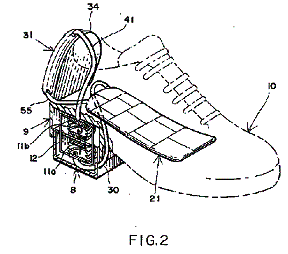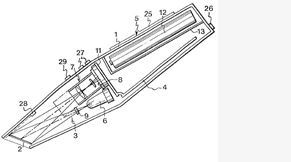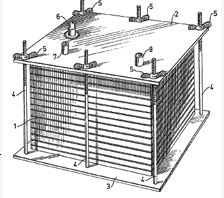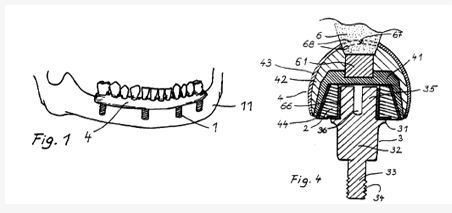What is Patent? - Definition, Rights, Types and Examples
September 28, 2018 by Archi Bhatia
A patent is a temporary Government grant of a monopoly to the inventor in return for complete disclosure about the invention to the Government. For an inventor, a patent is a ticket to use the invention exclusively and earn through licensing the patent.
Defining Patent
The patent is a temporary monopoly for the use of the invention. It provides a legal right to the title holder of exclusivity over the invention.
It’s a misconception among people that patent provides right to use and sell the invention but it only grants the patent holder right to exclude others from using the invention.
Patent Rights
The patent right generally originates from laws that have been established in India. As per which the owner of the patent or inventor has a right to exclude others from making, using or selling his invention.
Thus, a patent is a statutory right granted by the government to the inventor so that he could exclusively decide who uses the invention or if anyone, uses it at all.
What is an Invention?
It is important to define what would constitute invention under the Patent law in order to clear the ambiguity among the inventors.
Simply put, the invention is something that is not anticipated by publication in any journal or any other document around the world before the filing of the application.
Types of Patent Applications in India
Provisional Patent Application
A provisional application is a non- final application that is filed when an invention has not yet matured. It is beneficial only in the countries that follow the first to file system. The application helps you secure priority rights over the concept of technology and also eventually cuts down the overall cost of the patent application.
Convention Patent Application
When a patent applicant files an application in a convention country and then within 12 months of the application files another application in India claiming the priority date of convention application.
PCT National Phase Patent Application
A PCT application is a type of application which is governed by the Patent Corporation Treaty (PCT). PCT has been ratified by 142 countries, and hence the applicant can claim priority in multiple countries.
The applicant has a time limit of 30 months from the date of priority date filing to file national phase entry application.
Ordinary Patent Application
An application that is filed with the patent office without claiming any priority date or in connection with any prior application filed. The date on which the application is filed is considered the beginning of the timeline of the application.
Patent of Addition
After the grant of a patent has been obtained there is always a scope of improvement in an application and hence modification has to be made so as to improve the ordinary process of improving an invention.
Divisional Application
As the name suggests, a divisional application is where those patent applications where the invention is divided from one another as a patent is granted only for a single invention.
The division mostly is done when the examiner finds that the application contains more than one invention with inventive step and hence separate application is to be filed.
The Term of Patent Protection in India
India conforms to TRIPS agreement for establishing laws of protection for inventions. The term of protection that has been addressed in section 53 of the Indian Patents Act is 20 years; without any possibility of renewal.
Who Can Apply for Patents?
Following people can apply for a patent with the patent office:
- True or First Inventor
- Assignee
- Legal Representative
How to Get Patent Protection in India?
Patent protection can be attained by following the given procedure. the application has to be filed for every country separately.
The patent protection process involves three steps:
Step 1 - The person or the company involved must file a patent application with the patent office.
Step 2 - The patent office after submission examines the application and conducts a novelty search wherein every literature and documents available are searched.
Step 3 - After an application for examination of the application is filed the examiner checks all the available documents filed along with the claims based on the novelty search conducted prior to this step.
The applicant is given a chance to argue upon the interpretation of the examiner used to limit the scope of the invention.
Example of Patentable Inventions
Patent law has provided a broad definition of what can be patented. As per the provision of any new or useful process, the machine, manufacturing process or any new and useful improvement in the invention can be patented.
Some of the examples of the patented invention are:
1. Gravity Powered Shoe Air-Conditioner

The shoe was patented in the year 1994 by Israel Siegel. The working mechanism of the shoe involved using the powered motion of the person using the shoe. every time the person takes a step the heel activates the air-conditioner compressor.
2. Pen with a Scanner
Also known as C-Pen is invented and manufactured by Christer Fahraeus himself. The pen deciphers letters, numbers and figures. Text scanned can easily be transferred to a computer easily. The patent for the Pen scanner was granted in the year 1998.
3. Steel Kidneys (Dialysis Machine)
The patent for steel kidneys was granted in the year 1946, by Nils Alwall. The kidneys were developed twenty years prior to the mass production and use of the invention.
4. Titanium Screws and Fixing Teeth
It was commonly known among doctors and researchers that body rejects all the foreign objects, but Per-Ingvar Branemark succeeded in creating a method which is applied while attaching a number of artificial limbs.
This method was first invented in the year 1950s and attained patent protection in the year 1993.


